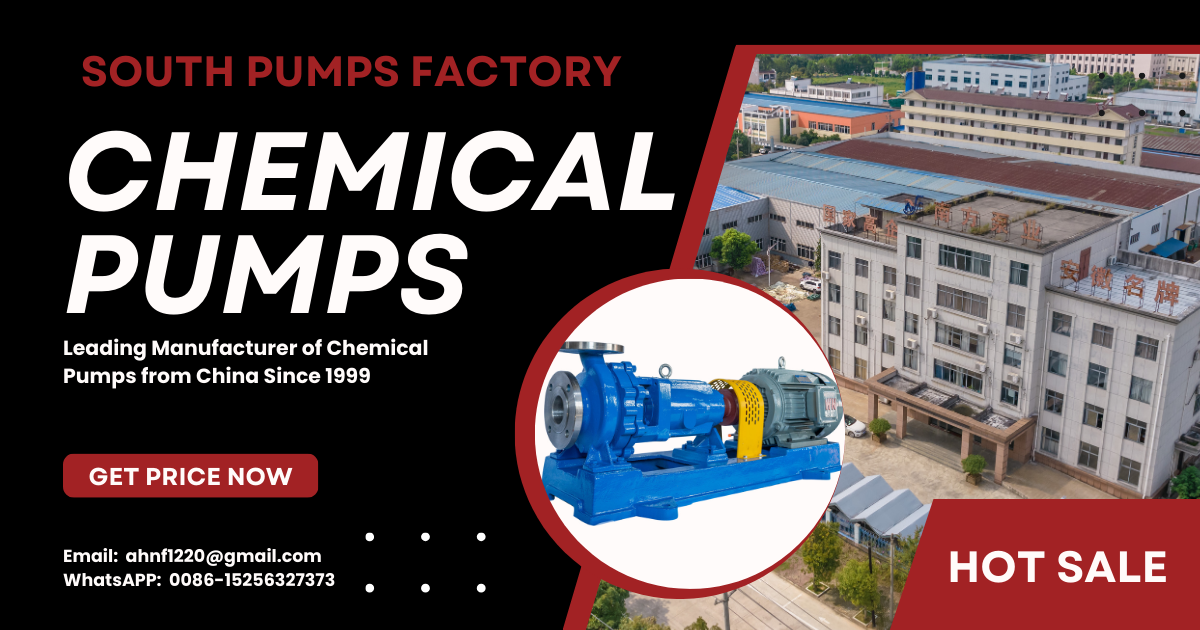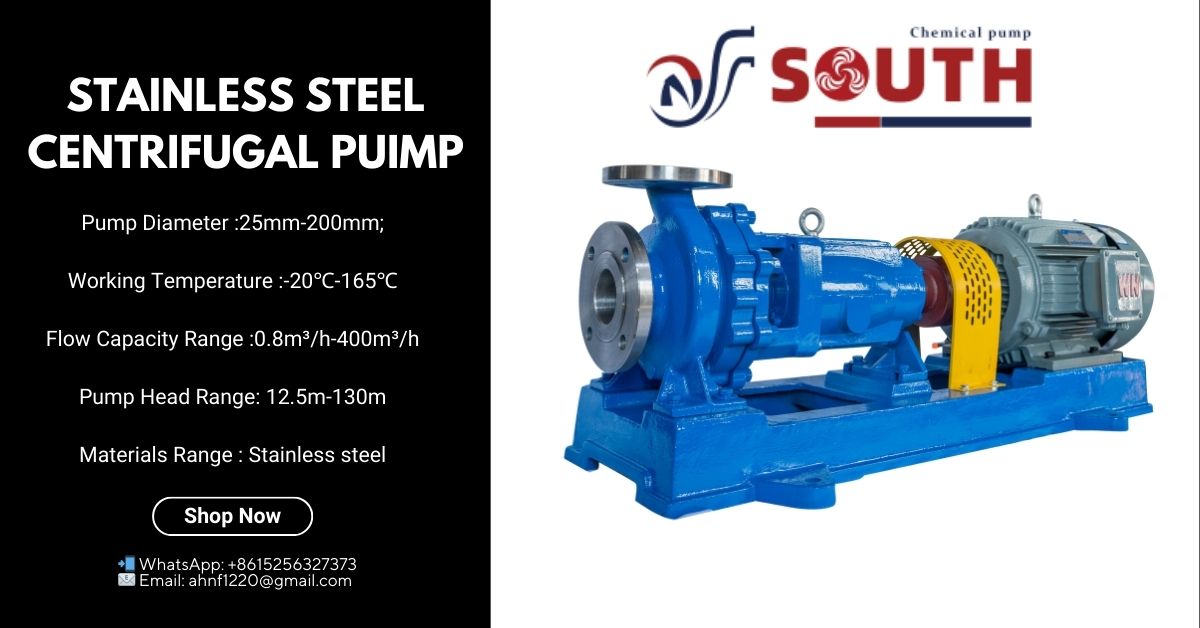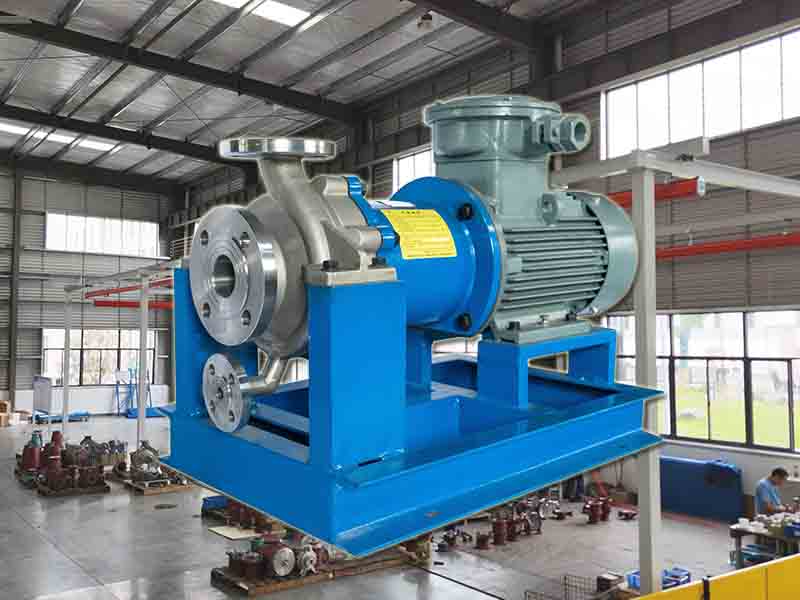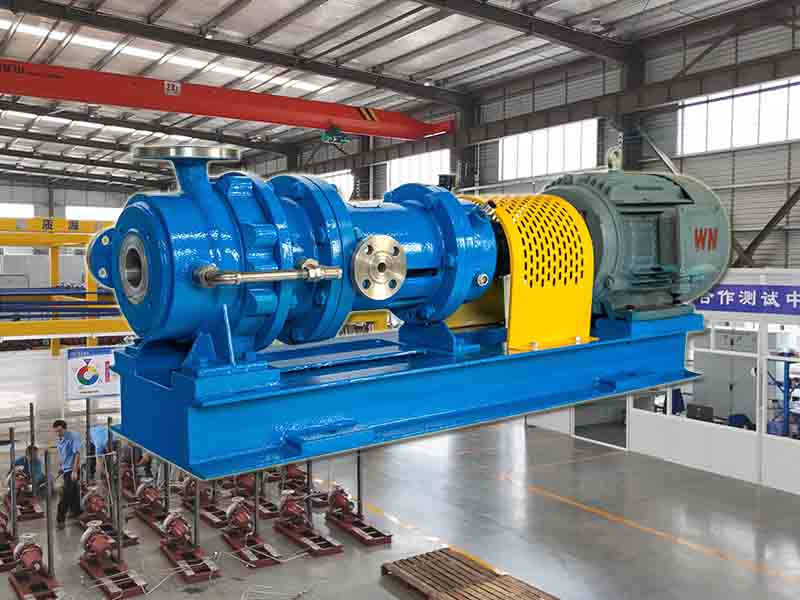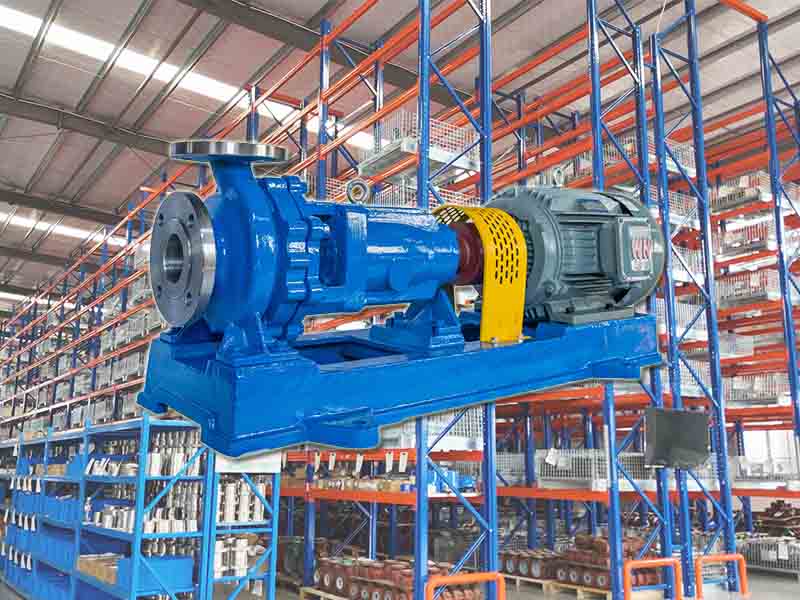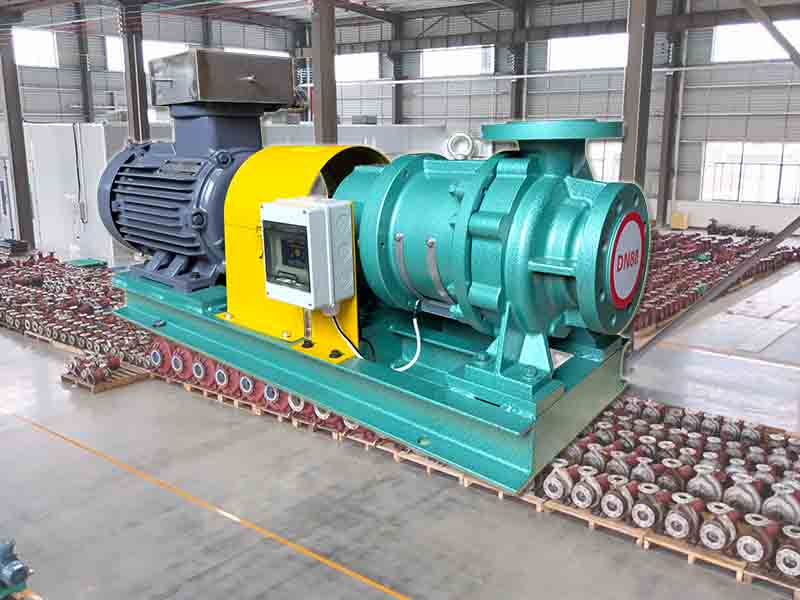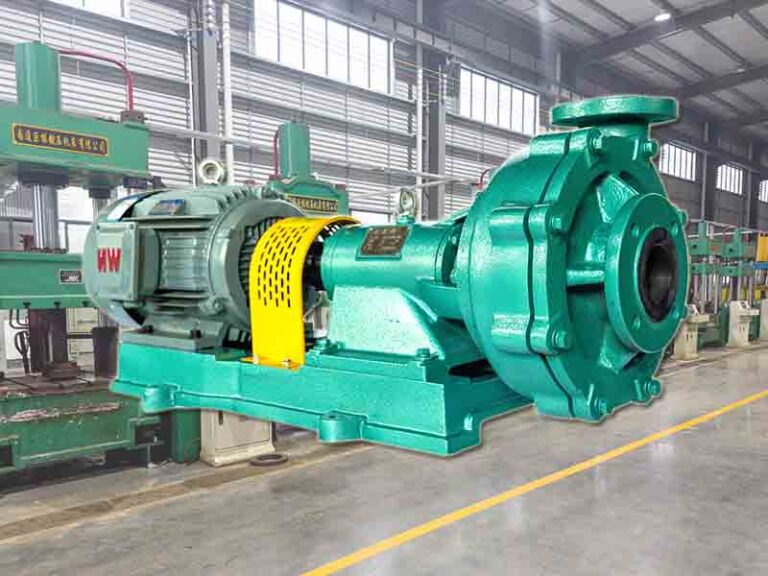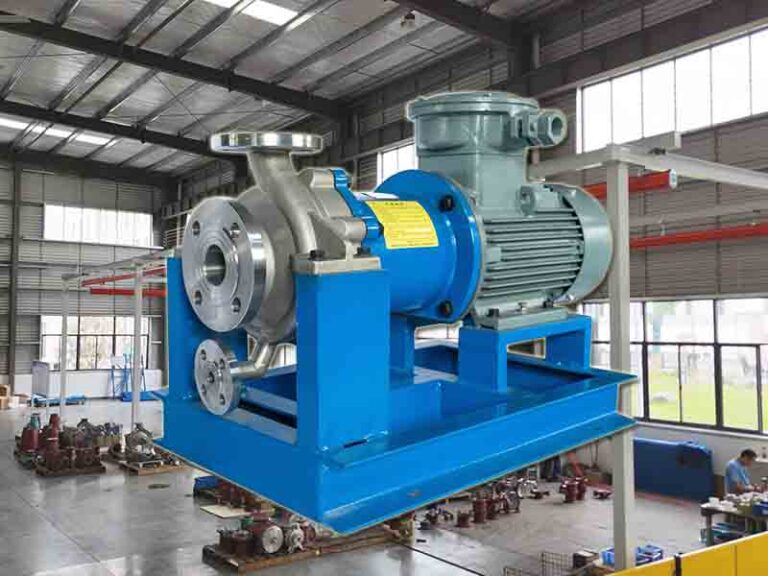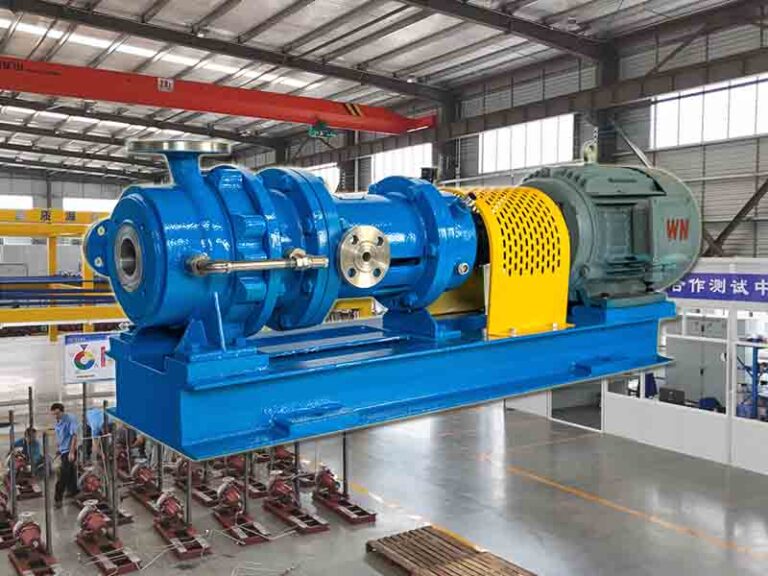1. Basic Structure of a Centrifugal Pump
A centrifugal pump consists of five key components:
- Impeller: The heart of the pump, designed for high speed and output. The impeller blades are crucial for driving fluid movement and must undergo static balance tests before assembly.
- Pump Body (Casing): This component houses and supports the internal parts of the pump. It connects to a bracket for bearing installation.
- Pump Shaft: This shaft connects the motor to the impeller via a coupling, transmitting mechanical energy essential for pump operation.
- Bearing: Supports the pump shaft and ensures smooth operation. Typical operating temperatures range from 60°C to 85°C; any higher may indicate a problem.
- Sealing Ring: Prevents fluid leakage between the impeller inlet and the casing. A proper fit is essential to maintain efficiency and output.
2. Working Principle of an Industrial Centrifugal Pump
Centrifugal pumps operate based on the principle of centrifugal force. The impeller rotates at high speed, generating centrifugal force that propels the liquid outward. This action creates a low-pressure area at the impeller inlet, continuously drawing in more liquid while discharging it. This design is suitable for various applications, including civil and industrial uses, and can handle clean, impure, or corrosive fluids.
3. Advantages of Centrifugal Pumps
- Compact Design: Centrifugal pumps have a simple and lightweight structure, making them easier to install and operate compared to reciprocating pumps.
- High-Speed Operation: They can run at high speeds and connect directly with 2-pole or 4-pole motors, enhancing efficiency.
- Durability: With fewer components, centrifugal pumps are reliable and require low maintenance.
- Versatile Applications: Capable of handling suspensions and corrosive solutions, they are ideal for a wide range of industries.
- Adjustable Output: The discharge valve allows for output management, preventing excessive pressure buildup.
4. Disadvantages of Centrifugal Pumps
- Priming Required: The pump body must be filled with liquid before operation.
- Limited Pressure and Flow: Not suitable for high-pressure, low-flow applications, which can lead to inefficiencies.
- Foaming Issues: Improper design or operation may cause foaming, impacting downstream processes.
- Air Binding: Incorrect installation can lead to air binding, affecting performance.
- Lower Efficiency: Generally less efficient compared to reciprocating pumps under certain conditions.
5. Applications of Centrifugal Pumps
Centrifugal pumps are widely used across various industries due to their efficiency and reliability:
- Wastewater Treatment: Their ability to handle large flows and high pressures makes them ideal for sewage treatment applications.
- Thermal Power Plants: Used for transferring hot water and waste water, these pumps can withstand high temperatures.
- Petrochemical Industry: Essential for refining and processing petroleum, including tasks like fuel preparation and lubricating oil production.
- Hydropower: These pumps lift riverbed water to generate electricity efficiently.
- Chemical Industry: Suitable for processes requiring high flow and pressure, utilizing materials that resist acid and alkali.
Centrifugal pumps are indispensable in modern industry, providing reliable solutions for a variety of pumping needs. Their efficiency, durability, and versatility make them a preferred choice in numerous applications, from water treatment to chemical processing.
